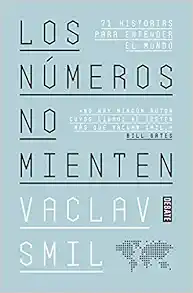
Energy: A Beginner's Guide (Beginner's Guides)
Description
'There is no author whose books I look forward to more than Vaclav Smil' -- Bill Gates'This book is about physical rather than social sciences. It explores important topics around how energy works, how our production and use might evolve, and how this affects climate change.' -- Mark Zuckerberg, CEO of Facebook'A breath of fresh air and a gem in the bookshop. Rich in thoughtful insights and written in sparkling prose.' -- Professor David G. Victor - School of Global Policy and Strategy, UC San Diego'This admirably clear and comprehensive guide shows how we use and misuse energy, and the prospects, as ever more if us devour the Earth's diminishing capital of fossil fuels.' ― Sir Crispin Tickell - British Ambassador to the United Nations --This text refers to an alternate kindle_edition edition. Vaclav Smil is Distinguished Professor Emeritus in the Faculty of Environment at the University of Manitoba in Winnipeg, Canada. He has written 40 books and nearly 500 papers on energy, environment and technical advances. In 2010 he was named by Foreign Policy magazine as one of the Top 100 Global Thinkers, in 2014 he became the Member of the Order of Canada and in 2015 he received the OPEC Award for Research. --This text refers to an alternate kindle_edition edition.
Features & Highlights
- With one famous equation, E=mc2, Einstein proved all matter can be described as energy. It is everywhere and it is everything.
- In this newly updated and engaging introduction, renowned scientist Vaclav Smil explores energy in all its facets – from the inner workings of the human body to what we eat, the car we drive and the race for more efficient and eco-friendly fuels.
- Energy: A Beginner's Guide
- highlights the importance of energy in both past and present societies, by shedding light on the science behind global warming and efforts to prevent it, and by revealing how our daily decisions affect energy consumption. Whether you're looking for dinner table conversation or to further your own understanding, this book will amaze and inform, uncovering the truths and exposing the myths behind one of the most important concepts in our universe.





